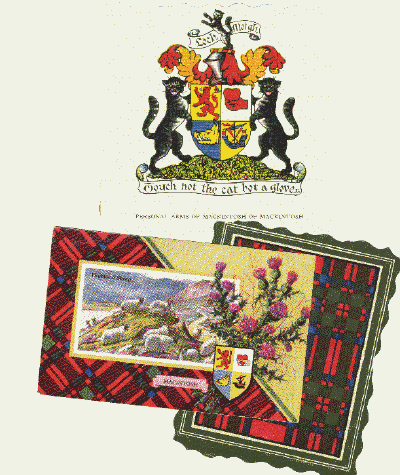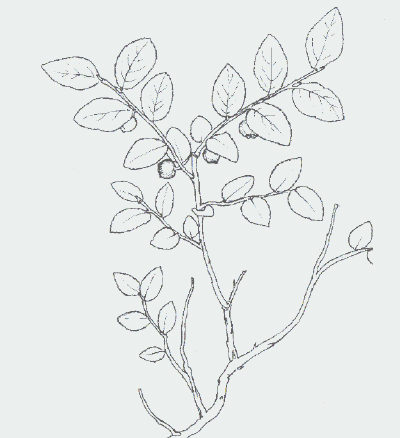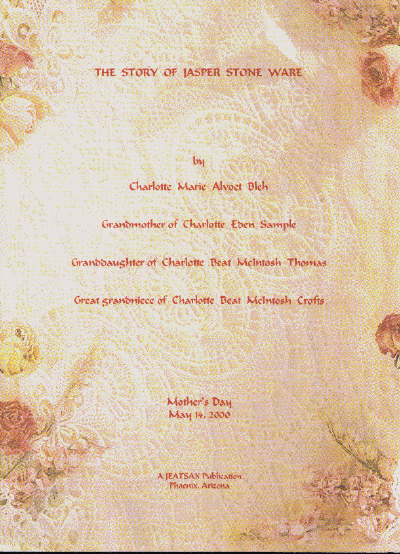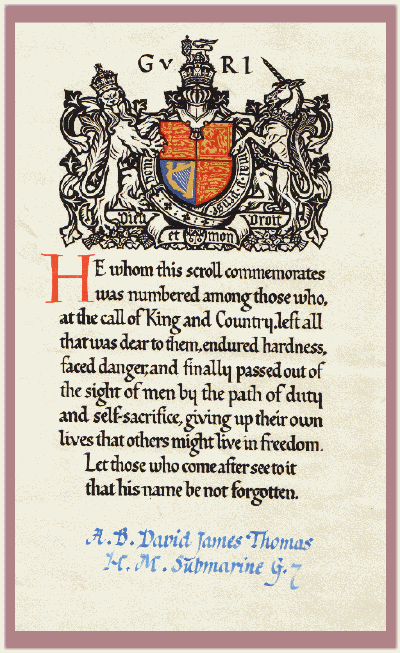|
Touch not the cat –
Clan Motto
Red Whortleberry –
Plant Badge
Wha daur meddle wi’ me?
. . . Black Watch motto, but the one my Granny used for her life!
What can I tell you about the Clan
McIntosh? I think what I learned from my Granny about our Scottish name
is written in the words above.
I have a very good little book, The Clan
McKintosh, written by Jean Dunlop and published 1960 by W. & A. K.
Johnston, etc., of Edinburgh and London, which gives a wonderful, very
readable history of the Clan. From it, you can learn that the clan lands
are around Inverness and how the McIntosh are associated with the
Frasers of Badenoch (especially interesting for those of you who read my
favourite Scottish historical-adventure-romance-very large novels by
Diana Gabaldon of Scotsdale, Arizona) and the Chan Chattan and a very
large group of other septs and general hangers on. But from me, I want
you to learn that you are Highlanders and that your ancestors marched
with Dundee and that it was probably uncles and fathers of yours whose
"bonnie blue bonnets" went "over the border",
accompanying those "hundred pipers an’ a’ an’ a."
Be proud of being McIntosh, the first
Scottish name in your family history and the one I believe we have the
right to claim for our clan and our tartan. Of course, we also have
Duncan’s and Benvie’s and Stewarts’ and Halkett’s and mair, but
with the McIntosh I feel we are bound.
Be proud of the fighting men of the
McIntosh. Think of fighting men who join with fighting women and raise
strong sons and daughters. I think it’s the highland blood that
somehow never got diluted that made my Granny the woman she was, and
must have linked my personality and spirit with hers. I can remember by
grandmother being angry and frustrated, but I can never remember her
defeated or depressed. She always seemed to have that ability to, in the
words of the song, "keep right on to the end of the road." And
my mother, too, although I’ve often seen her depressed and suffering
the sorrow of a sense of defeat, has also kept going down that sometimes
weary and long road.
McIntoshes seem to even fight among
themselves. We can’t agree on how to spell our name – McIntosh,
MacIntosh, McKintosh, Mackintosh.. If it wasn’t spelt
"McIntosh" like my Granny’s, she didn’t consider the
bearer a "real McIntosh." Either that, or as a clan, we’re
very poor spellers – and that’s not an out for you, my children or
children’s children who claim your writing challenges are genetic! We’re
McIntosh – where canna is niver winna’s brither!

LOCH MOIGH !

THE McINTOSH RED
WHORTLEBERRY PLANT BADGE
A Colouring Page

Click
here to learn more about the Clan McIntosh
The Wedgewood
The Wedgewood biscuit barrel has always
been synonomous for me with the meaning of being a McIntosh, at least a
McIntosh after the type of my Granny. Just this year, my granddaughter,
the Charlotte who’ll get the biscuit barrel when her mother feels she’s
ready for it, had a project in school. She asked me to help because it was
one of those "Pick a foreign country and write about it as a
geography/genealogy/history/culture experience" type of things get.
You know, write a paper, give a presentation, give Granma (that’s me) an
"A" for the work the kid did! Edie picked Scotland, knowing I
have lots of stuff being worked on, and I helped her put together a family
tree chart and prepare a little presentation. But what I really like is
this little picture story I wrote about the Wedgewood. I think it belongs
in this book in the section about Our Clan McIntosh. Hope you like it.

THE STORY BEGINS
I am known as Jasper. Jasper Stone Ware.
Perhaps my name may conjure up for you, my reader, visions of Regency or
Dickensian England, populated by beautiful women, scheming mothers with
bankrupt husbands, and dark brooding heroes written in novels from the
fertile minds of George Eliot, the Bronte Sisters, or Jane Austen.
However, if I were to rewrite my
nomenclature as Jasper stoneware I am sure a different vision would enter
into your imaginings - one of Roman vases and white classical figures
carved in relief upon deep blue backgrounds.

I am no ordinary ceramic. I am part of the
Wedgwood heritage. Created in Staffordshire, from the skills and
experiences of generations of potters, I am a work of English art that has
been part of a Scottish family for five generations.
This is my story of four Charlotte’s who
are linked together by my presence.

Charlotte Beat McIntosh Crofts, the
daughter of Jessie Hackett Beat and Peter McIntosh, is noted on the 1881
Scottish census as a "stoneware dealer". Sister of Alexander
McIntosh and aunt to Charlotte Beat McIntosh, and known as "Auntie
Chat", she shared a home, and her business in the Hilltown area of
Dundee with her widowed mother. She was the favourite aunt of her
namesake, Charlotte Beat McIntosh.

I traveled from "The Potteries"
in Staffordshire to her shop and, instead of being sold, was given as a
wedding gift to Charlotte McIntosh and her Welsh sailor husband, David
James Thomas of Llanelly on their wedding day in 1916.
For many years I sat on Charlotte Thomas’
mahogany sideboard at 7 Hill Street, Dundee. I was known not as Jasper
Ware, or jasper stoneware, but as "the blue Wedgwood biscuit barrel
from Auntie Chat."
Occasionally, biscuits were preserved
within my white shell, kept fresh with my silver handled lid with its
silversmith’s mark securely closed. However, for most of my provenance
there I was used to store the bits and pieces of life that go in and out
of a person’s home – keys, loose change, pieces of paper with
addresses, even an official document of sorts at times, such as a birth
certificate, or a love letter its recipient wanted to keep safe.
From my place in that home, I observed the
passage of events in the times of the McIntosh and Thomas lives. A
daughter was born. The Welsh submariner was killed shortly before the end
of the Great War.

Charlotte had a son. Eric died and was
buried in a pure white coffin on his 16th birthday. Caroline
Bett Thomas grew up and married a Canadian soldier from Windsor, Ontario,
Jerome Alvoet also of Pitthem, West Flanders, Belgium, and Detroit,
Michigan, USA, during the second great, or World, war. They had a son. She
and her son left for America but returned to give birth to another child
in Scotland.
The daughter’s daughter was born, and
named Charlotte, for the grandmother and the aunt. And I was promised to
Charlotte Marie Alvoet from the Charlotte who became Thomas who received
me from the Charlotte who became Crofts.

I observed the passage of events in the
times of the Thomas and Alvoet lives. Charlotte Alvoet grew up and claimed
me as hers, but I was not given to her until the day she married her
American sailor, John Edward Bleh from Cincinnati, Ohio and of Edzell,
Angus, Scotland during the Viet Nam war on a winter day in 1965. I was
carefully packed with the wedding dress and other treasures to be taken
from Scotland to carry on my observations of the events in the times of
the Alvoet and Bleh lives in America.
Children were born. The American sailor
died. Charlotte told her daughter the story of blue Wedgwood pottery and
the Charlotte who gave me to the other Charlotte and how I became hers.
And the daughter claimed me as her own.
The daughter who heard the story of how I
am passed from Charlotte to Charlotte is now a woman. From my place in the
glass paneled walnut cabinet in her home in Arizona, I observe the passage
of events in the lives of another family descended from the McIntosh’s
of Dundee, Angus, and Stirling, Perthshire. Daughters have been born and
are learning the story of Josiah Wedgwood and the art of the potteries.
The elder daughter is learning from her mother the story of the three
Charlotte’s before her and has claimed me to become hers.
And from my place in her home I shall
observe the passage of events in the life of another Charlotte and of the
family that will someday be hers.
AND, THEN, ANOTHER STORY
SHALL BEGIN |
